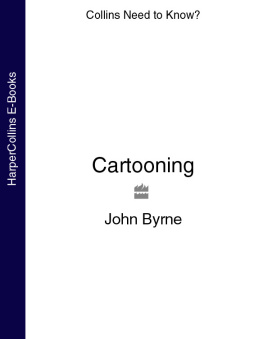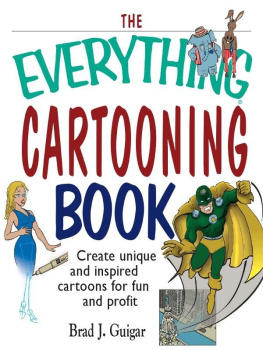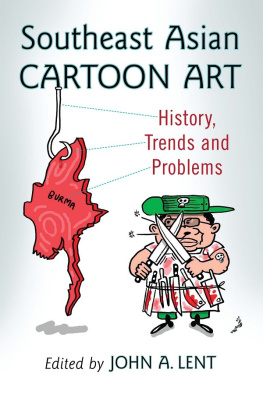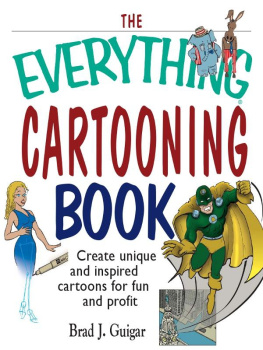More than 88 years ago, Walter Fostera well-known artist, instructor, and collectorbegan producing self-help art instruction books from his home in Laguna Beach, California. He originally wrote, illustrated, printed, bound, packaged, shipped, and distributed them himself. Although Walter passed away in 1981 at the age of 90, his legacy continues in a growing product line. Walter Foster Publishing now provides how-to books and kits to millions of enthusiastic artists worldwide who enjoy the rewards of learning to draw and paint. People who have never before picked up a paintbrush or drawing pencil have discovered their artistic talents through his easy-to-follow instruction books.
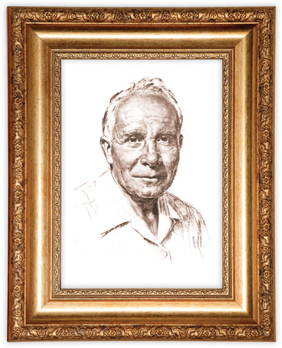
We are dedicated to preserving the high standards and superb quality you expect from our products. We believe artists are eager to learn, sharpen their skills, and experience new artistic horizons. Our mission is to provide the tools to accomplish those goalswe offer step-by-step books and kits that are accessible, entertaining, affordable, and informative. Whether this book is your first experience with us or the continuation of a long-term relationship with our products, we are sure that this title in our How to Draw & Paint series will delight you. Whatever your artistic ambitions may be, we wish you good luck and success and we hope that you always have fun in the process.
1999, 2004, 2010, 2011 Walter Foster Publishing, Inc. All rights reserved. (Previously titled Starting Out in Cartooning). Walter Foster is a registered trademark.
This book has been published to aid the aspiring artist. Reproduction of the work for study or finished art is permissible. Any art drawn or photomechanically reproduced from this publication for commercial purposes is forbidden without written consent from the publisher, Walter Foster Publishing, Inc. (HT269)
Digital edition: 978-1-61059-840-8
Softcover edition: 978-1-56010-487-2

Cartooning 1
Cartoons can charm. They can make you laugh. They can tell thrilling tales. And often, they do all three at the same time. What comes to mind when you think of cartooning? Comic strips and cartoons are only a few of the venues open to cartoonists. Cartoons also adorn and populate greeting cards, childrens books, and advertisements. All you need to get started are a few books, some basic techniques, and a little imagination. In this book I will show you how you can create your own private universe and bring to life anything from a talking dog to a mutant from Mars. As you start on your way, you will be amazed at how easy it is to develop your own cartoon characters. And, once inspired, youll enjoy the next book in this series, Cartooning 2Jack Keely.

CONTENTS
Getting Started
YOU DONT NEED MUCH to get started in this racket. One famous cartoon character began his career as a doodle made with a felt-tip marker on a napkin. However, a few basic supplies will make life a lot easier for the budding cartoonist.
The Basics
For starters, youll need a pencil for rough sketches, an eraser, some paper to draw on, and a pen or marker to ink in your final drawings. Which pencil? What kind of paper? Dont get stressed out worrying about what supplies to select. This isnt brain surgery or rocket science, and it doesnt really matter. It just depends on what you like to work with. Thats right. Youve got the ball, but here are a few general tips to steer you through the sea of supplies.

ERASER Fat, pink erasers like the ones on the ends of pencils leave crumbs all over the place. Youll need a kneaded eraser. It doesnt leave crumbs, and you can shape it into a point to get into small areas. You can also stretch it, squash it, and squeeze it into funny shapes while youre waiting for inspiration to strike.

A DRAWING PENCIL Pencils have different degrees of hardness. H pencils have hard leads, and B pencils have soft ones. An HB is somewhere in the middle, with a lead that is hard enough to keep a point and soft enough to shade with, making it a good pencil for sketching. Want more drama? 2B or 3B pencils have softer leads that allow you to make stronger lines. I suggest you use an HB pencil to sketch in guidelines and work out details on your cartoons.
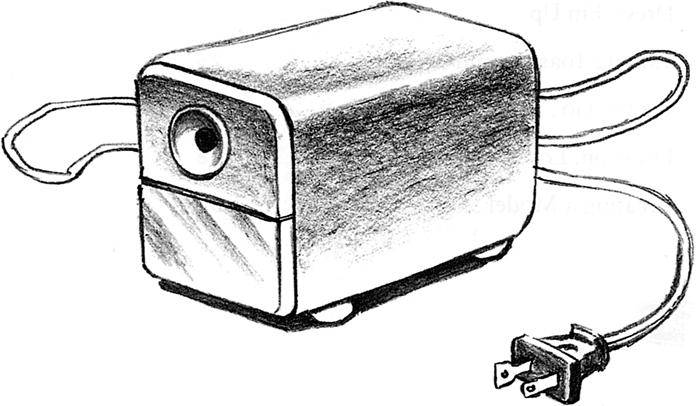
ELECTRIC SHARPENER Oh sure, its a luxury, and you can sharpen pencils by hand like the cavemen did (didnt they?), but an electric one gives you a great point and makes a satisfying noise. Ask Santa.
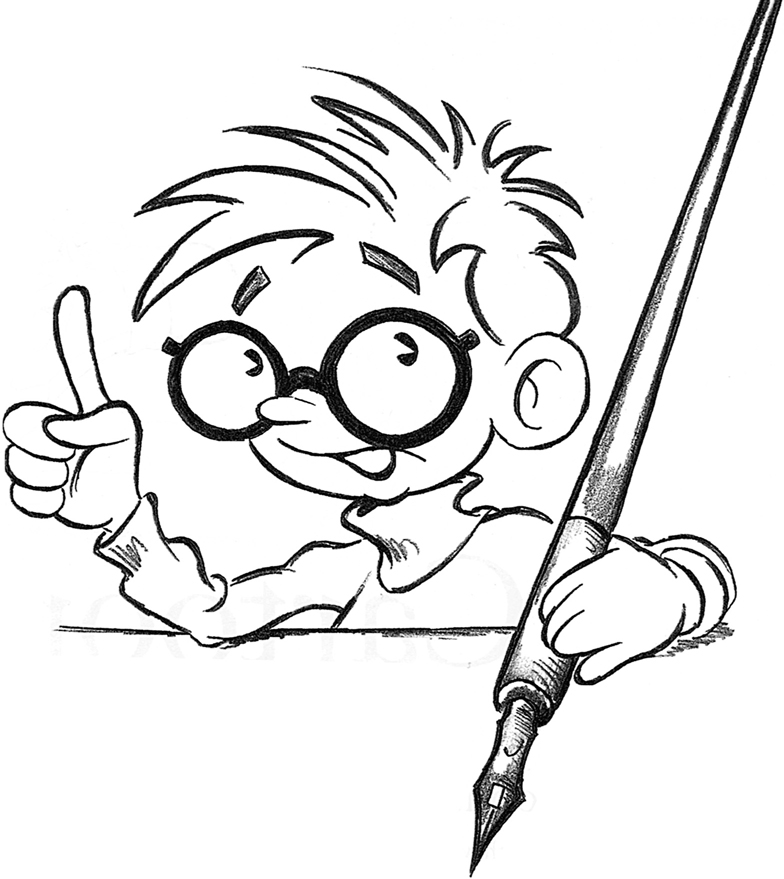
A DIP PEN I sometimes use an old-fashioned crow-quill pen with black India ink to make my cartoons extra expressive. These funky-looking pens come with many different nibsfrom very fine tips to broad-edged, chisel points. (I recommend that you start off with a medium-point pen because its the easiest one to use and the most versatile.) Dip just the point in the ink. Dont drown the pen. As you increase and decrease pressure on the pen, your line will become thicker and thinner. It takes time to master this pen, so start with some loose sketches.
Think Ink
Once you have perfected your drawing in pencil, you will want to ink it so that it will have rich, black lines. You have a lot of options depending on what type of line you are after, from ordinary felt-tip markers to crow-quill pens, fountain pens, and technical pens. Many cartoonists prefer a pen or a brush and black drawing ink. Try a variety of different inking tools, and see which ones you like best.
BRUSH The fluid lines of a brush and black ink can be delicate and precise or boldly dramatic, depending on the amount of pressure you use. A brush is also good for filling in large areas of black. Buy a good-quality brush at an art store. Cheap brushes wont keep a point and wont give you an eloquent line.
TECHNICAL PEN A technical pen offers you a lot of control. These pens come in a wide variety of points, enabling you to vary your line widths. The lines created are consistently even and precise, although they may look somewhat mechanical, without much flair. Mechanical pens are fun to use if you like to do a lot of minute crosshatching or stippling.
Study Up!
The better video stores are packed with great samples of animation that will help you get your creative juices flowing. Check out some interesting experimental animation and some of the groundbreaking cartoons from the pastnot just the latest hits. Did you know that every second you watch, there are 24 individual drawings that go by? Try making a few sketches of some frames.
Next page

